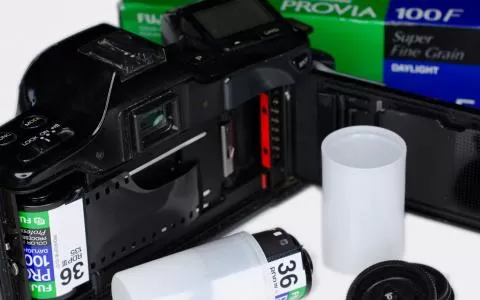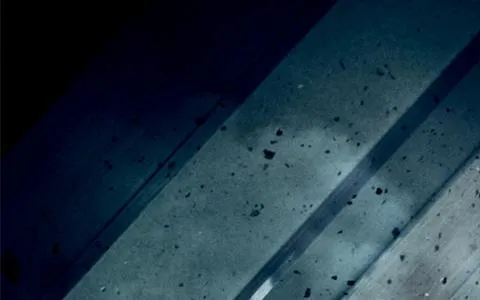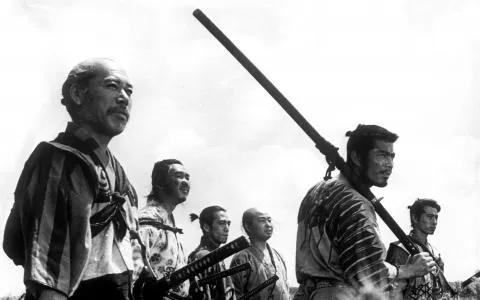OK, it's my own all time favorite movie, so I'm biased here, but I still think there's a lot to learn for any photographer.
Just to forewarn you: I love this movie!
I'm an avid sci-fi buff, a huge Ridley Scott fan and an enthusiastic movie goer too, and this is one of my all time best movie experiences.
I remember how fascinated I was the first time I saw it, which was just after its release in 1982 where I was 23. The version I saw back then was the severely molested one with Harrison Ford narrating over the images and a very happy ending. This wasn't the movie Ridley Scott had envisioned and is considered the worst version today, but I was still mesmerized.
Since then it has been cut, restored and edited several times, and now – in its 33rd year – Scott has released what he calls “The Final Release”, which is the seventh incarnation of the movie.
The latest release is beautifully restored, adheres to Scott's original manuscript and appears crisper, cleaner and with better sound than ever.
I won't go into details with the plot, but just tell that it's a science fiction movie set in the distant future of 2019... remember that the film is from 1982, and 2019 was far away then.
The plot is absolutely OK, but not the thing that really makes this movie. What makes it worth seeing for any photographer is the sets, the props, the wardrobe, the makeup, the effects and of course the photography.
The sets
In the Los Angeles of 2019 the streets are narrow and crammed with people. Buildings are tall, cars fly and it's dark and rainy all the time. I have been to the electric town Akihabara in Tokyo, and that's what this reminds me most of.
The sets were designed by Syd Mead, rightfully credited as visual futurist, and Mead's elaborate sets were very faithfully constructed by the team of set decorators. Mead's sketches are very detailed and a lot of the details can be found again in the movie.
Even though a whole city and streets were built for the purpose, one building is real and still exists, namely the Bradbury building in Los Angeles. This art deco building plays an important role, and is extremely well integrated into the rest of the sets.
All sets are drenched in water, dirt and smoke and appear just as gritty as the movie requires.
Dangerous Days
For people interested in much more about the creation of this film, I can warmly recommend the documentary “Dangerous Days” from 2007, which tells the story though interviews and a lot of behind-the-scenes footage and stills from the production. It's divided into eight chapters and runs for three and a half hours, and is pure candy for any Blade Runner fan and definitely worth watching for anybody with a bit of interest in film and photography.
The props, wardrobe and makeup
Be it bar stools, traffic lights, parking meters and a wealth of other things, they are all designed and built for the movie. Things like the Voight-Kampff analyzer, Harrison Ford's gun, umbrellas (with light in the handles) and many other things add greatly to the ambiance of the movie.
The wardrobe is not extremely odd, but just special enough to emphasize the futuristic look. The makeup department also did a great job. Both Sean Young's classic cinema noir heroine and Derryl Hannah's replicant are perfectly done and persons like Edward James Olmos' police officer and the Chinese Dr. Chew played by James Hong are great examples of male makeup done with great results.
The effects
Now, this movie was made in 1982, and CGI was not even invented. So everything is made using optics and physical objects. There's a lot of models involved and also the techniques of that time such as rotoscoping and painted mattes. And remember that all this was filmed on celluloid! Not a digital camera in sight for another decade or so, so all effects are done in-camera using different double exposure techniques.
Considering these obstacles the result is no less than astonishing. I have watched lots of movies stuffed with CGI, which do a much worse job. The fact that the effects are based on physical objects also add immensely to the physical feeling of the movie – a thing that mostly fails miserably when characters, sets and effects are computer generated.
As a small oddity the movie actually hardly features any computer screens apart from some primitive black/green text and graphics in one of the cars, the Voight-Kampff machine and the simple interface on Harrison Ford's image manipulator.
The photography
All the preparations, sets, wardrobe and makeup would have been done in vain if the movie hadn't been well shot.
It is!
Ridley Scott had some very firm ideas about compositions and looks of many scenes and used his photographers and set crews to the limit. The film changes effortlessly between intimate cinema noir scenes, large cityscapes and tightly framed scenes, which utilize sets and talent immensely well.
Scott composes like a still photographer and uses symmetry, lines, perspective, DOF and other photographic techniques. He uses light, water and smoke extensively to create ambiance and it works extremely well. Key frames in most scenes could easily do as great still photographs.
In the newly restored version, which can play in 4K cinemas, the film look is very obvious, and grain can be seen in most parts of the movie. As much as I love the knife sharp modern digital movies, I have to say that the slightly blurry and grainy film look is just great here.
PS: The music
Just as an added bonus: the music composed and performed by Vangelis just supports and underscores the whole mood of the film and is simply brilliant for this movie.
















